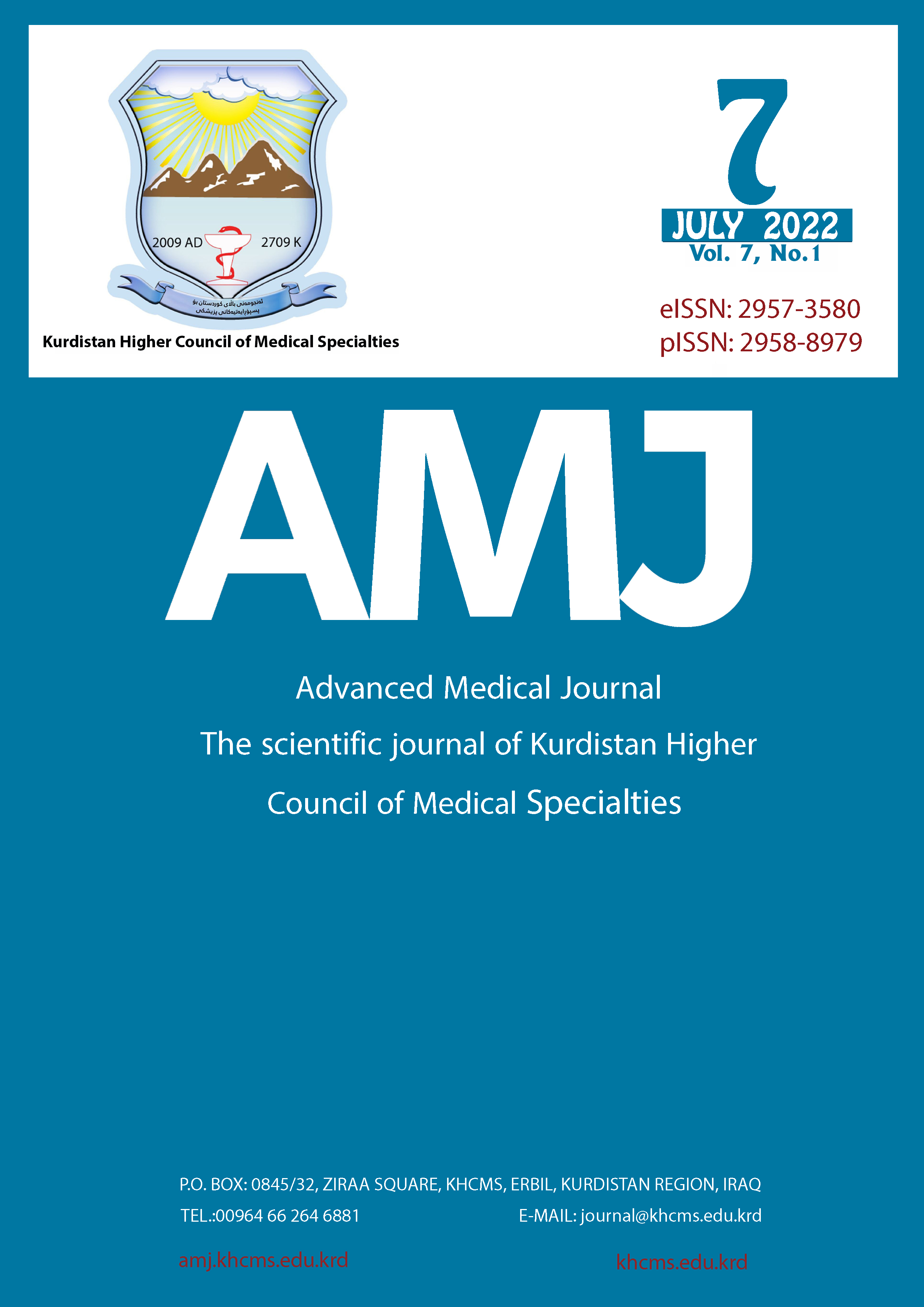Inner Ear Anomalies among Cochlear Implant Candidates in Erbil City, Iraq
DOI:
https://doi.org/10.56056/amj.2022.162Keywords:
Inner ear anomaly, cochlear implant, Mondini deformityAbstract
Background and objective: To study the frequency of each type of inner ear abnormalities in cochlear implant candidates in Erbil city, Iraq.
Methods: This is a case series study of high resolution computed tomography and magnetic resonance images of temporal bone in 111 candidates for cochlear implantation in Erbil city between June 2015 and December 2017; who had congenital bilateral profound hearing loss.
Results: In total, 111 cases of congenital sensorineural hearing loss were included. Of these, 101 patients had a normal inner ear pattern. Ten patients identified to have inner ear anomalies (9%). unilateral anomaly seen in one child, so the total number of ears with inner ear anomalies was 19. Among these 19 abnormal ears, 7 were classified as incomplete partition type II (36.8%), 4 as incomplete partition type I (21.1%), 4 as a common cavity (21.1%), 2 as cochlear aplasia (10.5%), 1 as cochlear hypoplasia (5.3%) and 1 as Michel deformity (5.3%).
Conclusions: The most common type of anomaly was incomplete partition type II “Mondini” deformity followed by common cavity and incomplete partition type I deformities. The incidence of congenital hearing loss with inner ear anomalies is similar to the results of such studies worldwide.
Downloads
References
Pooja VD, Shaileshkumar GS, Deepak VD et al . High-resolution computerized tomography and Magnetic Resonance Imaging (MRI) in preoperative evaluation of cochlear implant patients. Adv Arab Acad Audiovestibul J. 2015;2(1):1–4
Gupta SS, Maheshwari SR, Kirtane MV, Shrivastav N. Pictorial review of MRI/CT scan in congenital temporal bone anomalies, in patients for cochlear implant. Indian J Radiol Imaging 2009;19(2):99–106
Wu WJ, He XB, Tan LH, et al. Imaging assessment of profound sensorineural deafness with inner ear anatomical abnormalities. J Otol 2015; 10(1):29–38. doi: 10.1016/j.joto.2015.07.005
Ahmad RL, Lokman S. Cochlear implantation in congenital cochlear abnormalities. Med J Malaysia. 2005; 60(3):379–82
Sennaro?lu L, Bajin MD. Classification and current management of inner ear malformations. Balkan Med J 2017;34(5):397–411
Digge P, Solanki RN, Shah DC, Vishwakarma R, Kumar S. Imaging modality of choice for pre-operative cochlear imaging: HRCT vs. MRI temporal bone. J Clin Diagn Res 2016;10(10):TC01–TC04
Huang BY, Zdanski C, Castillo M. Pediatric sensorineural hearing loss, Part 1: Practical aspects for neuroradiologists. Am J Neuroradiol 2012; 33(2):211–7
Aldhafeeri AM, Alsanosi AA. Prevalence of inner ear anomalies among cochlear implant candidates. Saudi Med J. 2016;37(10):1096–100. doi: 10.15537/smj.2016.10.15025
Buchman CA, Copeland BJ, Yu KK, Brown CJ, Carrasco VN, Pillsbury HC. Cochlear implantation in children with congenital inner ear malformations. Laryngoscope 2004; 114(2):309–16
Sennaroglu L. Cochlear implantation in inner ear malformations – a review article. Cochlear Implants Int. 2010;11(1):4–41. doi: 10.1002/cii.416.
Jackler RK, Luxford WM, House WF. Congenital malformations of the inner ear: a classification based on embryogenesis. Laryngoscope 1987;97(3 Pt 2 Suppl 40):2–14
Daneshi A, Farhadi M, Ajalloueyan M, et al. Cochlear implantation in children with inner ear malformation: A multicenter study on auditory performance and speech production outcomes. Int J Pediatr Otorhinolaryngol. 2020; 22:132.
Ozgen B, Oguz KK, Atas A, Sennaroglu L. Complete labyrinthine aplasia: Clinical and radiologic findings with review of the literature. Am J Neuroradiol 2009;30(4):774–80
Jackler R, De La Cruz A. The large vestibular aqueduct syndrome. Laryngoscope. 1989; 99:1238–43.
Lemmerling MM, Mancuso AA, Antonelli PJ, Kubilis PS. Normal modiolus: CT appearance in patients with a large vestibular aqueduct. Radiology 1997; 204:213–9.
Downloads
Published
Issue
Section
License
Copyright (c) 2022 Inas Duraid Nuradeen, Saeed Nadhim Younis

This work is licensed under a Creative Commons Attribution-NonCommercial-ShareAlike 4.0 International License.
The copyright on any article published in AMJ (The Scientific Journal of Kurdistan Higher Council of Medical Specialties )is retained by the author(s) in agreement with the Creative Commons Attribution Non-Commercial ShareAlike License (CC BY-NC-SA 4.0)














